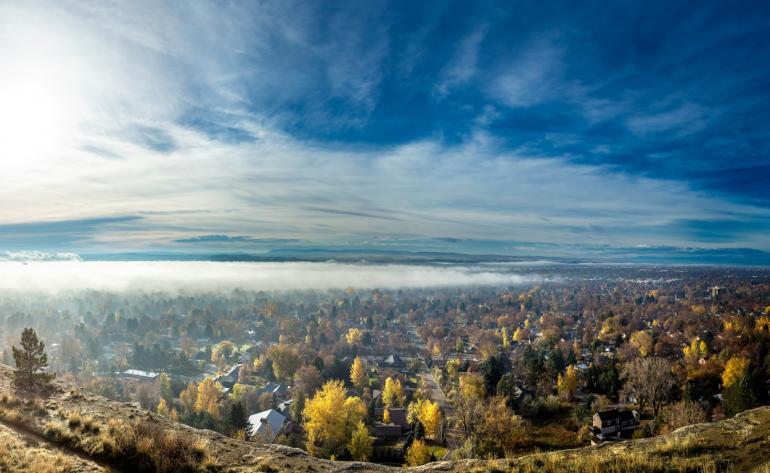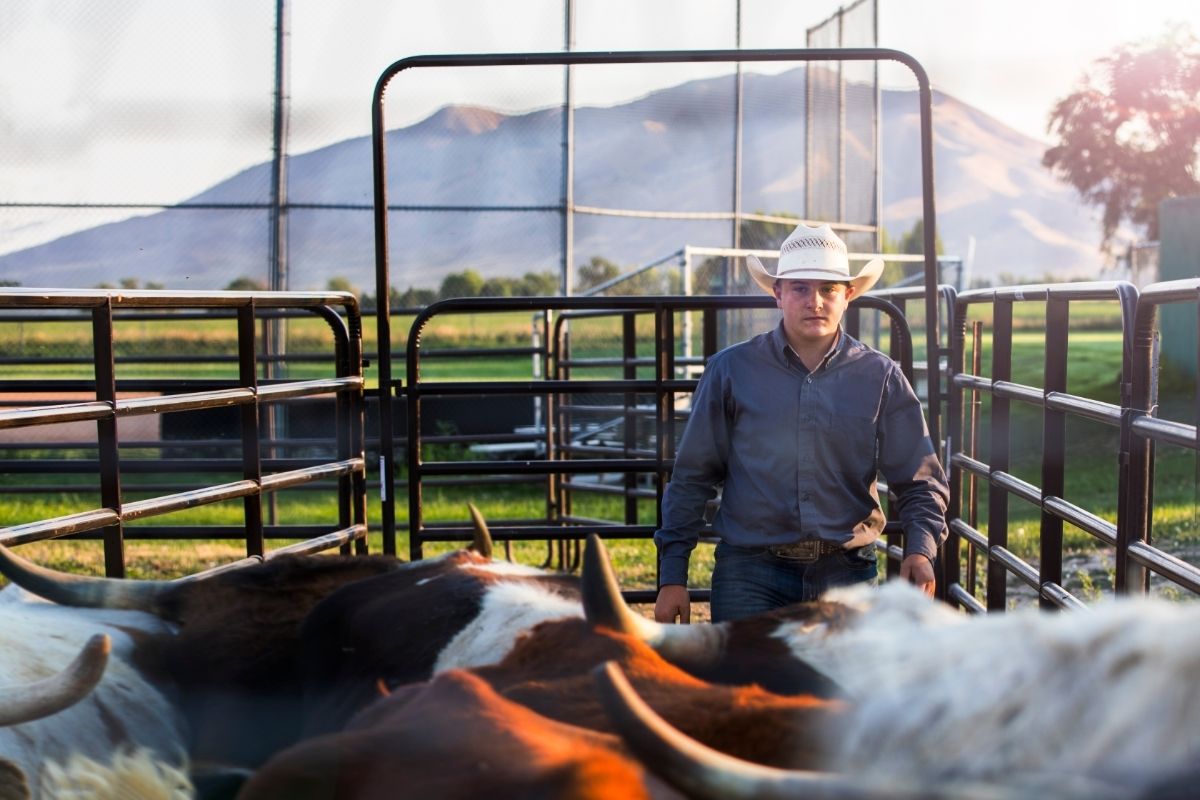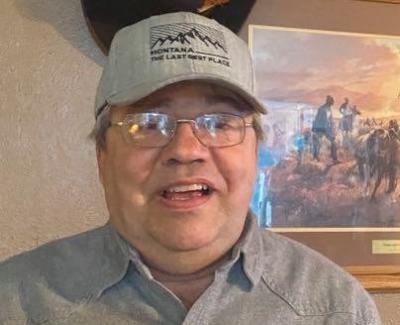An Old Broke Montana Rancher on the Way We Were, and the Way We Could Be


I have seen a lot of changes in Montana over the years. As a crotchety old man and a life-long pessimist, I have to say that while some have been good, some seem to me to have been very bad.
It won't surprise you to hear that Montana has small towns. And I don't mean small as in they only have two gastropubs that serve soy lattes. I mean the one-elevator types, with a Ma and Pa combination grocery/general store, one solitary bar to go to after you attend the one church, and no post office at all kind of towns. We used to have a lot of them, and I suppose we still do. But those towns, which used to provide so much of Montana's odd charm, are drying up fast. Many of the small towns that existed when I was a little critter have shrunk to what I would now reluctantly call living ghost towns. Many are so small that there might be only one person living in what is left of the whole town.
I'll be first to admit that this process started long before I appeared on the scene. It probably started almost as soon as homesteading began, and continued as Montana was settled. It was, is, and I suspect always will be tough to make a living on the Montana prairies.
But I wonder if, with each succeeding generation, it has gone from hard to harder yet. Look at the farm gate sales price for wheat over the years, and you will see what I mean. Now compare year after year to what other things cost. Wheat in 1897, adjusted for inflation, would be worth well over $30 a bushel today.
The overhead for land, machinery, building supplies, transportation, you name it, they've all gone up. The costs have advanced with, or way ahead of inflation. Yet the price of wheat remains stubbornly low; farming is indeed a "tough row to hoe." It's no wonder towns in farm country have shrunk.
Unless they're constructed of sod, buildings last longer than do the people who build them. So most of the towns are still there in the sense that if you drive to the indicated spot on the map you will find a ramshackle assortment of buildings. But they are virtually abandoned now. Many of the medium-sized villages have remained relatively stable, with a new building or two added and one or two torn down every year.Conversely, some of the bigger towns or cities have grown. Some of them have in actuality seen exponential growth.
The population of Montana in 1960 was about 680 thousand people. Now they estimate nearly 1.08 Million. I imagine many an old-school Montanan lamenting the moment that invisible ticker passed a million.

Billings has changed the most, at least in my view. I grew up in Lewistown, and I remember going to Billings with my family as a small boy. We went to check out the fair, or sometimes just for Mom to shop - even then, Billings was a big city to us.
But I vividly remember that the fairgrounds (now called the Metro area) was out of town, and getting to it meant crossing at least a mile of mostly empty space from the fairgrounds down Montana Avenue to about 27th street. Now it can almost take as much time, in rush hour, to traverse the Billings Heights as it used to take to drive from Lewistown to Billings. Billings has grown in all directions. Poly Drive was a sort of bypass back then with not much north of the Rocky Campus. There was no development to speak of west of Zimmerman trail. All of those neighborhoods are new in the last 50 years. The roads to Huntley and Hardin did not look at all like they do today. Laurel was its own discrete city then, and now there is development all the way between and almost out to Columbus. And what I have heard described by many as mansions have been plopped on their stately 20-40 Acre plots nearly all the way to Red Lodge.
Great Falls has also seen its share of growth in the same 50 years. It is now big enough to have two Walmarts. Not much more than that needs to be said.
 Missoula has seen the same type of growth as Billings and Great Falls. The difference I see, though, is that Missoula, with its perceived better views, has seen even more of the development go towards bedroom communities that surround the city, servicing a populace of commuters. With run-away growth, dare I say sprawl, there are now 5 to 10 acre lots on every hillside. I hope I don't offend anyone, because no offense is intended, but it looks like the septic tanks might be a little close to the wells, if you know what I mean. At least, I assume that there is not a chance for city water or sewer on those steep hillsides, so I assume they must have wells. At any rate, as I drive south or look west out of Missoula, I can't help but notice there are whole sides of town that didn't exist just a generation ago.
Missoula has seen the same type of growth as Billings and Great Falls. The difference I see, though, is that Missoula, with its perceived better views, has seen even more of the development go towards bedroom communities that surround the city, servicing a populace of commuters. With run-away growth, dare I say sprawl, there are now 5 to 10 acre lots on every hillside. I hope I don't offend anyone, because no offense is intended, but it looks like the septic tanks might be a little close to the wells, if you know what I mean. At least, I assume that there is not a chance for city water or sewer on those steep hillsides, so I assume they must have wells. At any rate, as I drive south or look west out of Missoula, I can't help but notice there are whole sides of town that didn't exist just a generation ago.
Any person old enough (and if you're one of us I give you a hale and hearty hello, as our population is thinning these days) to remember Bozeman, or Kalispell, from 50 years back probably agrees with me that much has changed, and not much has remained the same. Runaway sprawl and serious congestion rule the day in both of those cities, though it would take a harder heart than mine to suggest they're not still pretty.
Sadly, I feel that those bigger towns, for all their new prosperity, lag far behind on the development of their infrastructure. Good thing that the scenery is so beautiful, or else there'd be nothing to look at while you're stuck in a traffic jam.
Please do not get me wrong; Bozeman and Kalispell are still stunningly beautiful and desirable places in which to live. Montana, even with the doubling of population in 50 years, still has plenty of wide-open space in which to grow. I just wish that there was more local commerce. We linger far behind most of the rest of the nation in jobs for our children.

As a state, we are a leader in wheat production, but good luck finding a flour mill. As a state, we are a leader in cattle production, yet good luck finding a butcher shop in places like Ingomar, Glendive, Glasgow, or Malta. That one is really a sore spot with me; as a rancher, it sticks in my craw that it can take up to six months of planning to get one of my own steers put in my freezer. There are very few Ma and Pa butcher shops left, nor a place to process a chicken or hog. When was the last time you saw a ham, or pork chop, labeled as from Montana? So the fruits of our labor are transported out to be processed, have the "value" added, and are then trucked back to a Costo or Walmart by the pound. I imagine that Nelson Story or Granville Stuart would find that the height of absurdity.
I saw a bumper sticker the other day that said "Montana Is Full - I Hear North Dakota Is Nice," and another that said, "Montana Sucks Now Go Home and Tell Your Friends." That attitude, while it makes me chuckle, might just be part of our problem.
We hope that we can remain the way we were. That is unrealistic - even absurd - when you consider for a moment that one of our primary sources of revenue is tourists. So we want them to visit, and then go tell their friends not to visit. It's ok for us to live here, but not allow others the same privilege? In my mind, one of the things all of the population centers in our great USA have in common is they are (or were) nice places in which to hang your hat. It is not a coincidence that people were attracted to California by the wagon trainload. Do not expect people to stay out of Montana when it just isn't going to happen.
We have lots of good things to go around. One especially good thing is room to grow, and we stand now at the still shockingly (and comfortingly) low population density of seven people per square mile in 2020. So if the campground is full up, well, then let's build another one a ways down the road.
Let's promote our state and produce some value-added right here. I am tired of our children having to move to the big city to find a job. Let's produce it, build it, process it right here!
 I have four boys and they'll all need jobs. I'd prefer they get good ones, too. I would like it if my boys could find a good job, a job where they can raise a family so they could stay right here and sprout from their roots in Montana. Odds are most of you folks have kin that you would like to see live near you, too.
I have four boys and they'll all need jobs. I'd prefer they get good ones, too. I would like it if my boys could find a good job, a job where they can raise a family so they could stay right here and sprout from their roots in Montana. Odds are most of you folks have kin that you would like to see live near you, too.
So as a bitter old codger, I long for the way we were. But as a thinking person I say some development is a good thing. I enjoy the surrounding scenery, but not the traffic jams. Don't you think with just a little planning, Montana could route traffic every bit as efficiently as more populated states? Couldn't we butcher our own meat? Bottle our own milk? Add our own value to every move we make, add value to everything we do, and then enjoy the fruits of that value ourselves?
I don't have a crystal ball, so I'll look into the ice of my whiskey glass to perform some divination. In 50 more years, Billings could be the size of Denver. Missoula might be the new Spokane. In 1970 there were 205 million people in the US, and now they estimate 330 million. In fifty years, will it be 400 million? Montana is going to grow in population, one way or the other. In 50 more years, my "crystal ball" suggests that there will be 2.5 million inhabitants in Montana. Shows like "Yellowstone," of which I am a very great fan, show a new generation the wonders and charms of the Last Best Place.
I do not think a bumper sticker is going to keep them out.
Nor will I concede that a million more people will really change the way things are all that much. With a little planning, the way we were could be the way we will be. Hopefully, in the not-so-distant future, the rancher will be able to process his beef a few miles from his ranch rather than a few states away. Perhaps we will have built some infrastructure that makes sense.
Even if there is a big city, or two, in my (tell you what, I'll use 'our' in the spirit of neighborly love) Montana in 50 years, it will still remain the Treasure State. And I think there's plenty of treasure to go around. But let's see that some of that treasure reaches the small and forgotten towns. Let's see to it that Ma and Pa get their share of the treasure too.
Let's make it so! After all, it's up to us. As I said, I still laugh at the bumper stickers. But I can see the value that a little clean and competitive commerce could bring to our lives. I would bid a hearty Montana handshake to anyone who comes here because they recognize something special here, something vanishing and beautiful. Let's work together to keep it that way. Let's see that our sons and daughters have futures as bright as the past.


Gary Shelton was born in Lewistown in 1951 and has been a rancher, a railroader, a biker, a teacher, a hippie, and a cowboy. Now he's trying his hand at writing in the earnest hope that he'll make enough at it to make a downpayment on an RV. Hell, scratch that. Enough to buy the whole RV. He can be reached at [email protected] for complaints, criticisms, and recriminations. Compliments can be sent to the same place, but we request you don't send them - it'll make his head big.